
Entry Requirements
No previous qualifications required, just an interest & enthusiasm for garden design.

Course Duration
10 days In-Studio + Up to 10 weeks home study - 12 weeks in total

Assessment
No exams — Portfolio assessment by your Tutor and AIM Qualifications.
Course Summary
As an alternative to flexible online study and to accelerate your qualification our live ‘In-Studio’ Course Diploma in Professional Garden Design allows you to work with our expert tutors and join other like-minded garden design enthusiasts for a more hands-on and collaborative approach to your learning. Working with a client brief, you will learn an array of skills taking you from the initial concept stage, through design development and into final proposal stage for a residential garden design project.
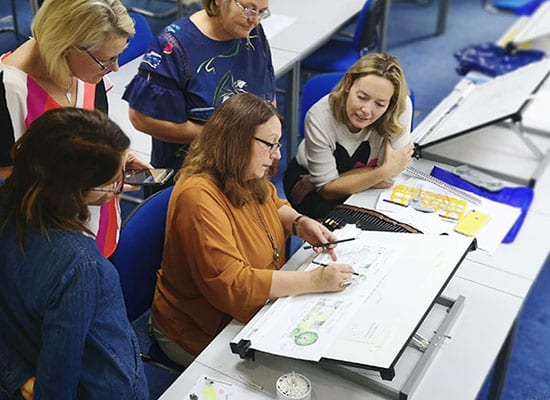
What Will You Learn?
With these skills you will be able to tackle your own garden design projects more professionally, start your own garden design business or enter the garden design industry with the practical knowledge required to work with potential clients. You’ll also learn how to establish industry contacts, where to source plants, samples, outdoor furniture, lighting and start to build a design community with your peers.
Whilst receiving hands-on advice directly from our highly experienced NDA Tutors, the In-studio course brings together a fantastic mix of students, helping to create an exciting, friendly and dynamic class with the chance to share ideas with fellow up and coming garden designers.
Course Duration
We are passionate about delivering high-quality courses to our students, and we believe that students learn faster in smaller groups, which is why we cap the number of students attending each course.

What Will I Study?
You will study ten dedicated units during this Professional Diploma
- Unit 1
- Unit 2
- Unit 3
- Unit 4
- Unit 5
- Unit 6
- Unit 7
- Unit 8
- Unit 9
- Unit 10
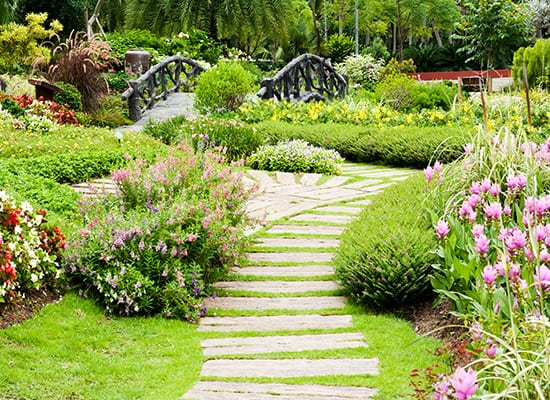
Background to Garden Design
This unit introduces you to the definition of Garden Design and key Garden styles. It covers the history of Garden Design and the main design principles Garden Designers work with in the present day. This unit also includes:
- The definition of Garden Design
- The history and development of Garden Design
- The effect garden design history has on contemporary gardens
- Garden Design styles, e.g. formal, classical, urban, rural, cottage etc.
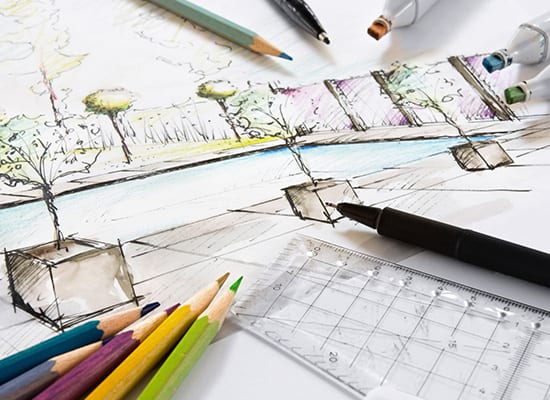
The Role of the Garden Designer
This Unit introduces you to a design brief and takes you through the different stages of the garden design process, giving you an understanding of the role and responsibilities of the garden designer. This unit also includes:
- Skills required to fulfil the role of Garden Designer
- Stages of the garden design process
- The importance of the design brief
- An introduction to the virtual client, whose garden you will design throughout the course
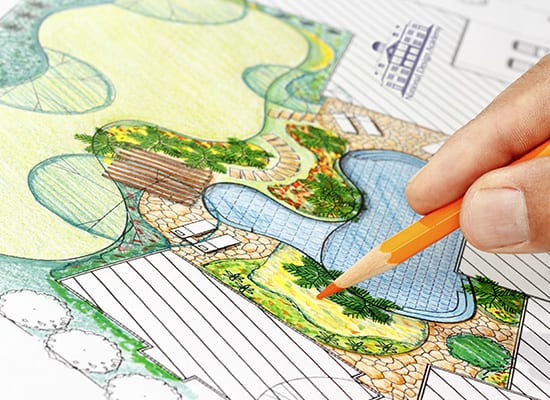
Presentation Techniques
Within this Unit, you will learn how to measure a garden and draw it to scale. You will also learn how to start the process of developing conceptual designs for a client. This unit also includes:
- Site surveying – how & what to measure or record on site
- Surveying tools
- Understanding scale
- Developing technical plans to scale, step by step
- Hand drawn or CAD – students may produce either
- Industry standard drawing conventions
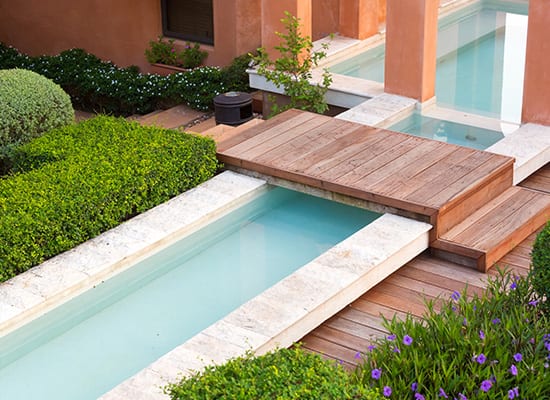
Components of Garden Design
This unit focuses on how you organise and fill your garden design effectively. You will have the opportunity use your creative skills by preparing and presenting your ideas working to a specific garden design brief. This unit also includes:
- Planning the space
- Colour theory & how it will affect your garden design
- Creating a variety of effects using garden components: boundaries, structures, planting, soft & hard landscape
- Using furniture, accessories, play equipment, pets, wild animals and water features for garden design
- Light and shade as part of the garden design
- Concept and design presentation to a client
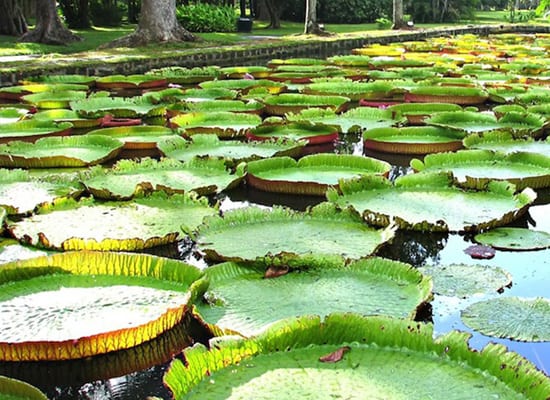
Understanding Plants
This Unit will help you to understand planting biology and the importance of selecting appropriate planting as part of your design. This fundamental knowledge will complement your presentation skills when developing a design and help you to communicate your initial ideas. This unit also includes:
- Plant identification
- Plant features: flowers, fruits, leaves, stems
- Hazardous plants
- Basic plant biology
- Plant names and classification
- Soil types and suitability for plants
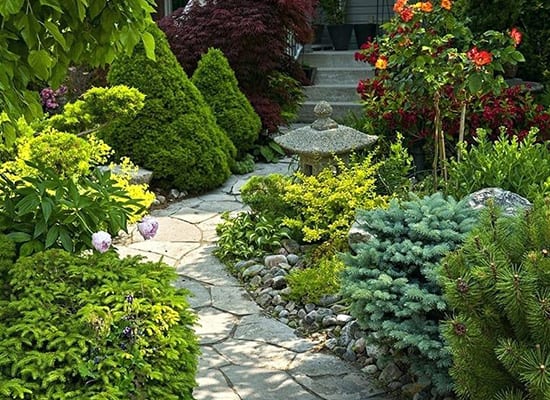
Using Hard Landscaping Materials
In this Unit, you will learn how to select specific Hard Landscaping Materials to enhance your design. Increasing your knowledge of sustainable products and practices It also covers how to communicate your ideas visually to your client and how to specify your requirements to a contractor. This unit also includes:
- Raw, natural & man-made materials: stone, aggregates, stone composite, metals, glass, timber, synthetics
- Recycled and reclaimed materials
- Use for walling, paving, decking, pergolas and arches
- Drawing a Hard Landscaping plan
- Communicating your design via a presentation board
- The importance of a specification
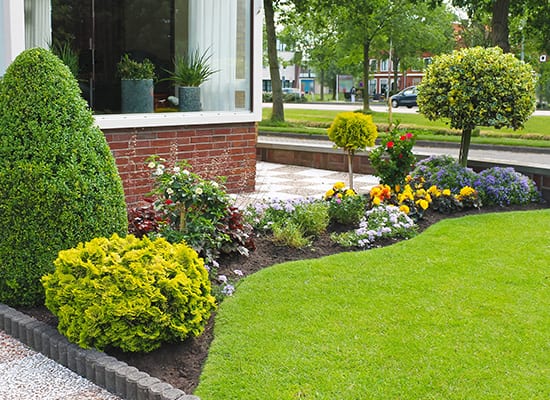
Selecting Plant Types
This Unit looks at how you source your plants and the practical and aesthetic considerations to be considered when developing a planting layout to a design brief. You will also learn how to present a planting plan to a professional standard. This unit also includes:
- The role of plants in the garden
- Selection & design for site context, functionality and client requirements
- Selection & design for visual aesthetics
- Producing a planting plan
- Planting specifications

Selecting Furniture & Features
This Unit looks specifically at sourcing furniture, lighting, water features and accessories from the huge variety available, to meet your client brief. You will learn about the main types of garden lighting and how to present this information on a Furniture, Lighting and Accessories Plan. This unit also includes:
- Furniture: human scale, bespoke, style
- Garden lighting: function, types and specification
- Water features: types, style and how to design
- Garden accessories: pots, sculpture, garden art, statues, heating, barbeques / outdoor kitchens
- Presenting your selection to your client
- Designing to accommodate pets and wildlife

Professional Practice
This unit shows you everything you need to know about how to set up your own garden design business. It also helps you identify other career opportunities within Garden Design, such as working within an established garden design practice or moving on to studying for a degree. This unit also includes:
- Different roles within the Industry
- How to set up a garden design practice
- Marketing and promotion
- How to calculate your fees
- Handling clients and the client brief
- Sourcing suppliers and contractors
- Managing the project
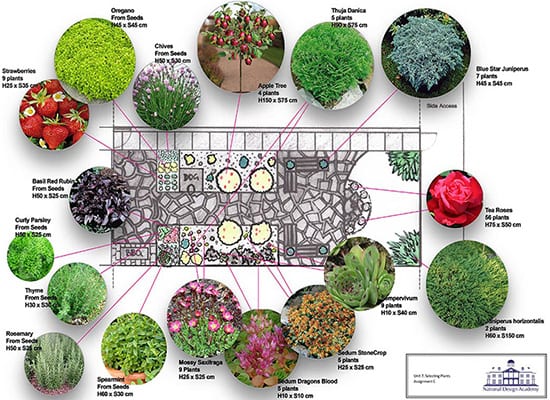
Producing a Garden Design
For the final unit of the course, you bring together all your newly learned skills by producing conceptual designs and a design pack to create a wonderful garden design for a new client. When complete, your work will form an asset to your developing portfolio to show future clients. This unit also includes:
- Creating concept plans
- Creating a planting plan
- Creating a hard landscaping plan
- Concept sketches
- Specifications, rationale and order of works

Background to Garden Design
This unit introduces you to the definition of Garden Design and key Garden styles. It covers the history of Garden Design and the main design principles Garden Designers work with in the present day. This unit also includes:
- The definition of Garden Design
- The history and development of Garden Design
- The effect garden design history has on contemporary gardens
- Garden Design styles, e.g. formal, classical, urban, rural, cottage etc.

The Role of the Garden Designer
This Unit introduces you to a design brief and takes you through the different stages of the garden design process, giving you an understanding of the role and responsibilities of the garden designer. This unit also includes:
- Skills required to fulfil the role of Garden Designer
- Stages of the garden design process
- The importance of the design brief
- An introduction to the virtual client, whose garden you will design throughout the course

Presentation Techniques
Within this Unit, you will learn how to measure a garden and draw it to scale. You will also learn how to start the process of developing conceptual designs for a client. This unit also includes:
- Site surveying – how & what to measure or record on site
- Surveying tools
- Understanding scale
- Developing technical plans to scale, step by step
- Hand drawn or CAD – students may produce either
- Industry standard drawing conventions

Components of Garden Design
This unit focuses on how you organise and fill your garden design effectively. You will have the opportunity use your creative skills by preparing and presenting your ideas working to a specific garden design brief. This unit also includes:
- Planning the space
- Colour theory & how it will affect your garden design
- Creating a variety of effects using garden components: boundaries, structures, planting, soft & hard landscape
- Using furniture, accessories, play equipment, pets, wild animals and water features for garden design
- Light and shade as part of the garden design
- Concept and design presentation to a client

Understanding Plants
This Unit will help you to understand planting biology and the importance of selecting appropriate planting as part of your design. This fundamental knowledge will complement your presentation skills when developing a design and help you to communicate your initial ideas. This unit also includes:
- Plant identification
- Plant features: flowers, fruits, leaves, stems
- Hazardous plants
- Basic plant biology
- Plant names and classification
- Soil types and suitability for plants

Using Hard Landscaping Materials
In this Unit, you will learn how to select specific Hard Landscaping Materials to enhance your design. Increasing your knowledge of sustainable products and practices It also covers how to communicate your ideas visually to your client and how to specify your requirements to a contractor. This unit also includes:
- Raw, natural & man-made materials: stone, aggregates, stone composite, metals, glass, timber, synthetics
- Recycled and reclaimed materials
- Use for walling, paving, decking, pergolas and arches
- Drawing a Hard Landscaping plan
- Communicating your design via a presentation board
- The importance of a specification

Selecting Plant Types
This Unit looks at how you source your plants and the practical and aesthetic considerations to be considered when developing a planting layout to a design brief. You will also learn how to present a planting plan to a professional standard. This unit also includes:
- The role of plants in the garden
- Selection & design for site context, functionality and client requirements
- Selection & design for visual aesthetics
- Producing a planting plan
- Planting specifications

Selecting Furniture & Features
This Unit looks specifically at sourcing furniture, lighting, water features and accessories from the huge variety available, to meet your client brief. You will learn about the main types of garden lighting and how to present this information on a Furniture, Lighting and Accessories Plan. This unit also includes:
- Furniture: human scale, bespoke, style
- Garden lighting: function, types and specification
- Water features: types, style and how to design
- Garden accessories: pots, sculpture, garden art, statues, heating, barbeques / outdoor kitchens
- Presenting your selection to your client
- Designing to accommodate pets and wildlife

Professional Practice
This unit shows you everything you need to know about how to set up your own garden design business. It also helps you identify other career opportunities within Garden Design, such as working within an established garden design practice or moving on to studying for a degree. This unit also includes:
- Different roles within the Industry
- How to set up a garden design practice
- Marketing and promotion
- How to calculate your fees
- Handling clients and the client brief
- Sourcing suppliers and contractors
- Managing the project

Producing a Garden Design
For the final unit of the course, you bring together all your newly learned skills by producing conceptual designs and a design pack to create a wonderful garden design for a new client. When complete, your work will form an asset to your developing portfolio to show future clients. This unit also includes:
- Creating concept plans
- Creating a planting plan
- Creating a hard landscaping plan
- Concept sketches
- Specifications, rationale and order of works
In-Studio Gallery
A selection of our talented Diploma students amazing work!
- UK Government Funding (Diploma)
UK residents pay approximately 50% course fees and funding from the UK government will pay the rest.
- UK Government Student Loan (Diploma)
Accreditation
All NDA Professional Diplomas are accredited by AIM Qualifications. NDA is the only design school to be able to offer funding & student loans because our Diplomas are fully accredited.
In-Studio Diploma Course Fees
UK Students
Full Course Fee £2,390
UK Government Funding
International Students
There are two ways for International students to pay for their In-Studio Diploma:
What Will I Need To Study?
In-Studio Study – All required design equipment and resources will be provided during your time In-Studio, however you will need access to a laptop computer to view course material and the online learning resources.
Home Study – Alongside a computer and an internet connection, there is also essential and recommended design equipment required to complete your NDA Course, all available through the NDA Art Shop at student prices! Throughout home study, you have full online access to our resources and your Personal Tutor.
What's Next?
Careers
The Diploma in Professional Garden Design is designed to help you start your own Garden Design business. Like the Diploma course itself, you can work flexibly for your clients around your family commitments and gradually expand your business.
Higher Education
Once you have successfully completed the NDA Diploma in Professional Garden Design, you will be offered a guaranteed place onto one of our BA (Hons) degrees with a generous Progression Scholarship (such as Design for Outdoor Living BA (Hons)). Degrees are awarded by our academic partner, De Montfort University Leicester (DMU), and they are studied online in the same way as your Diploma.
Ready to pursue your passion for Garden Design?
What Our Students Say...
Hear what past and present students have to say about studying In-Studio at the NDA

